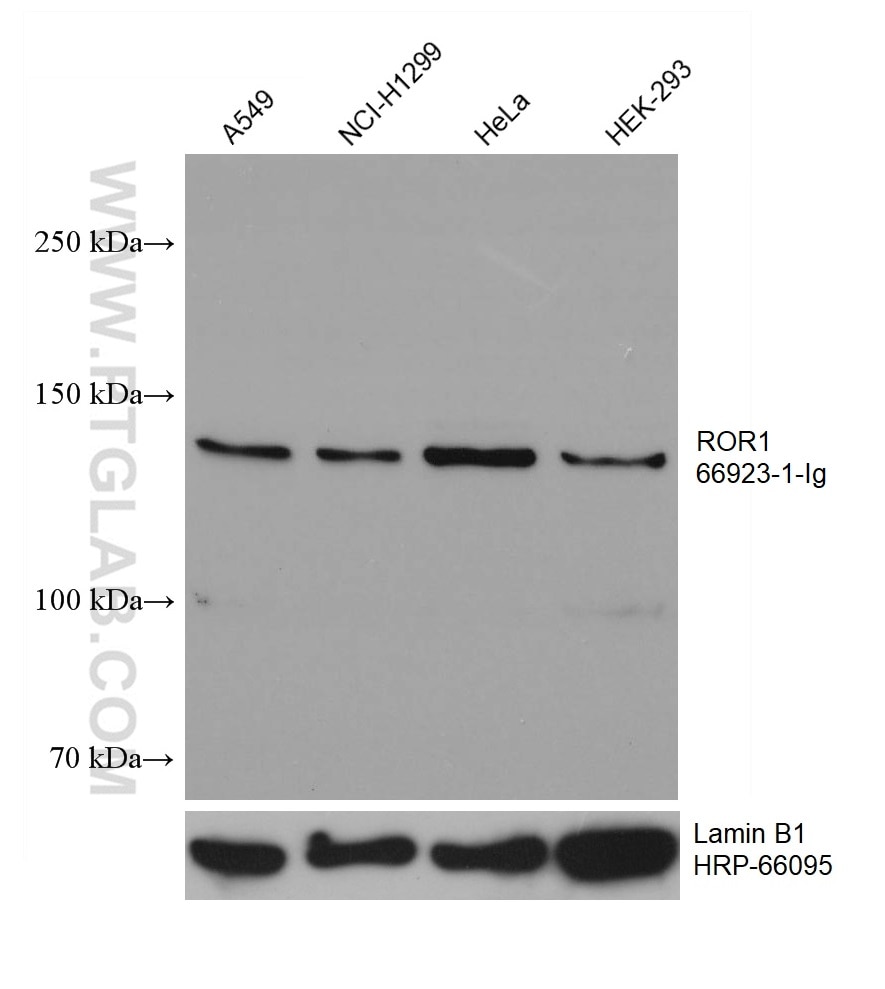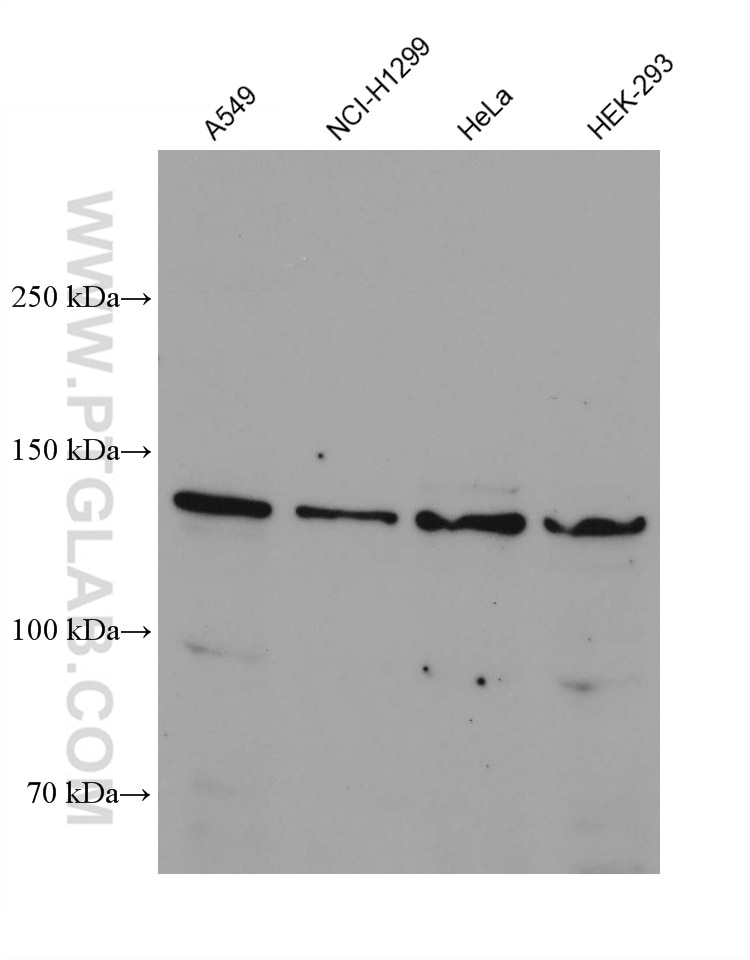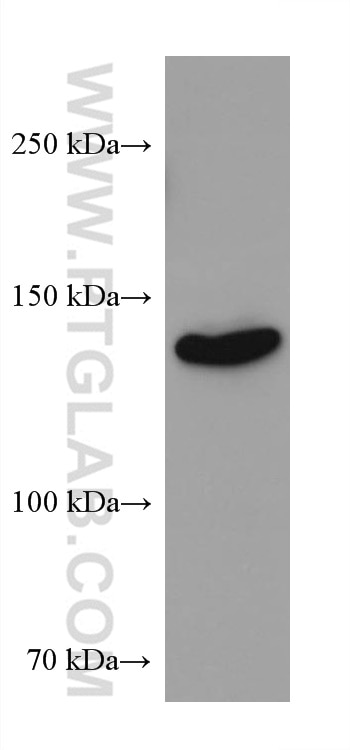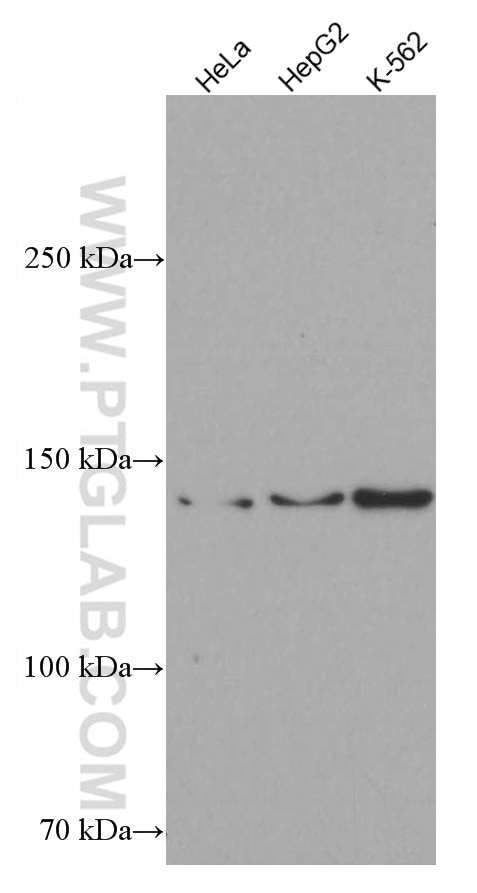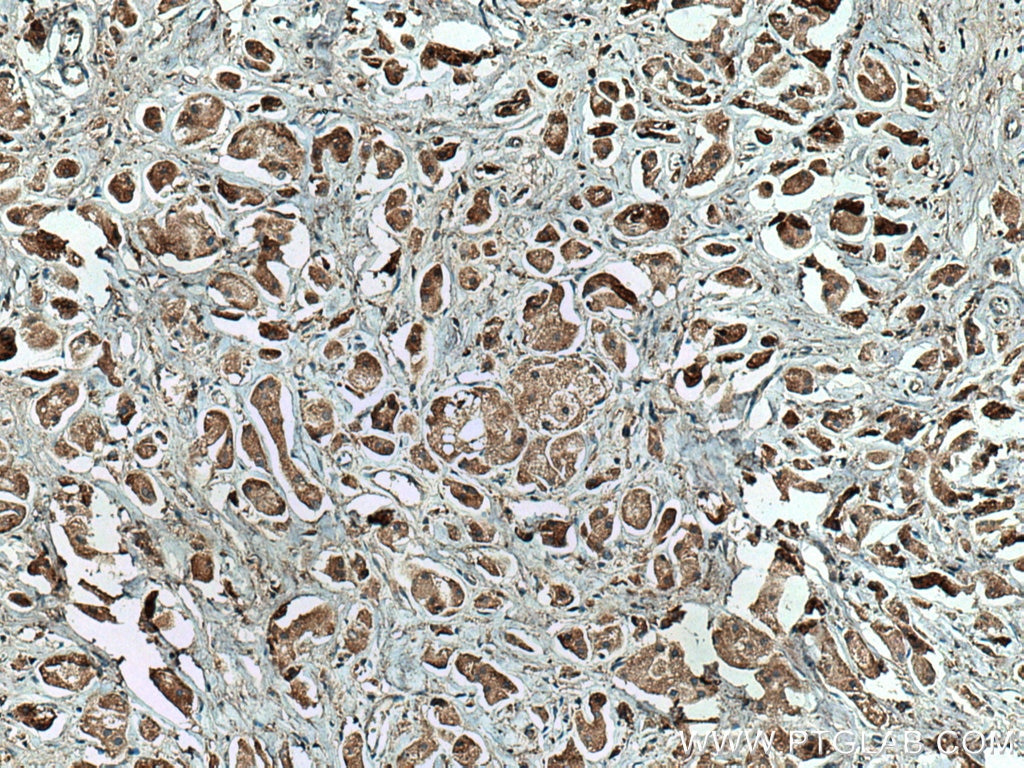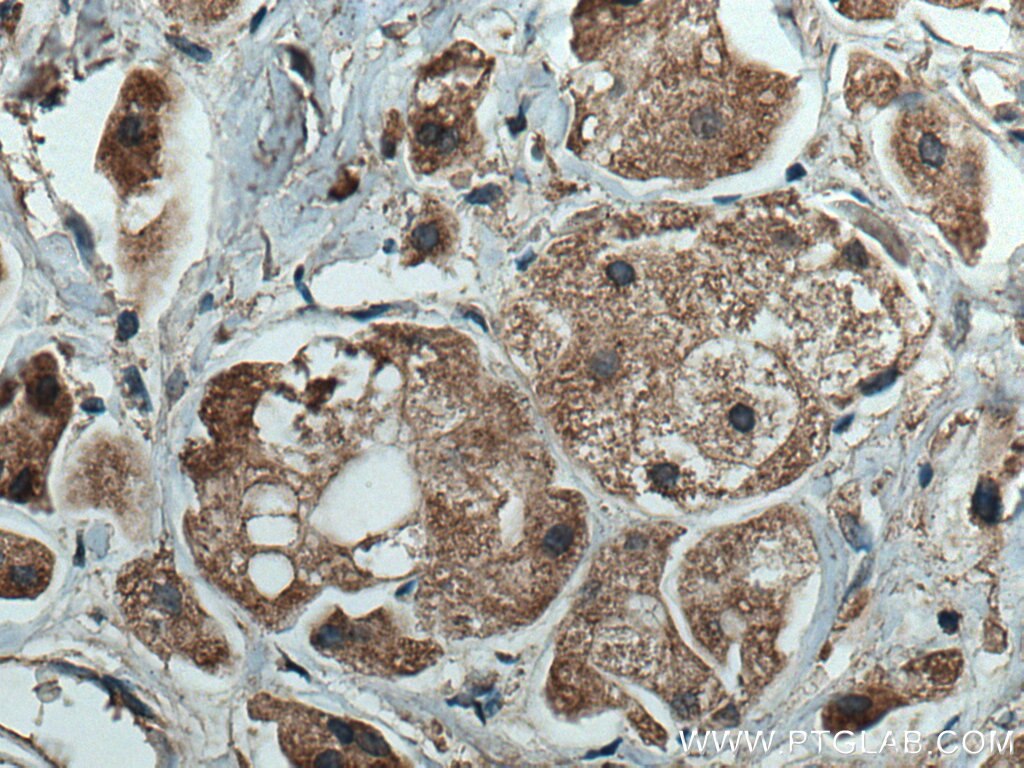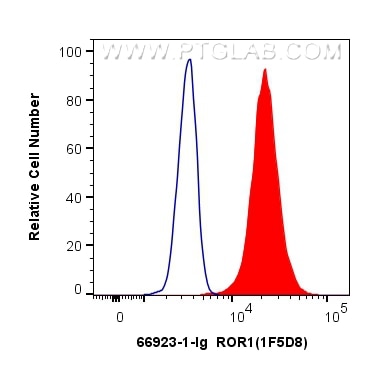- Phare
- Validé par KD/KO
Anticorps Monoclonal anti-ROR1
ROR1 Monoclonal Antibody for FC, IHC, WB, ELISA
Hôte / Isotype
Mouse / IgG1
Réactivité testée
Humain, souris
Applications
WB, IHC, FC, ELISA
Conjugaison
Non conjugué
CloneNo.
1F5D8
N° de cat : 66923-1-Ig
Synonymes
Galerie de données de validation
Applications testées
| Résultats positifs en WB | cellules A549, cellules HEK-293, cellules HeLa, cellules HepG2, cellules K-562, cellules NCI-H1299, cellules NIH/3T3 |
| Résultats positifs en IHC | tissu de cancer du sein humain, il est suggéré de démasquer l'antigène avec un tampon de TE buffer pH 9.0; (*) À défaut, 'le démasquage de l'antigène peut être 'effectué avec un tampon citrate pH 6,0. |
| Résultats positifs en cytométrie | cellules K-562, |
Dilution recommandée
| Application | Dilution |
|---|---|
| Western Blot (WB) | WB : 1:1000-1:6000 |
| Immunohistochimie (IHC) | IHC : 1:300-1:1200 |
| Flow Cytometry (FC) | FC : 0.40 ug per 10^6 cells in a 100 µl suspension |
| It is recommended that this reagent should be titrated in each testing system to obtain optimal results. | |
| Sample-dependent, check data in validation data gallery | |
Applications publiées
| KD/KO | See 1 publications below |
| WB | See 1 publications below |
| IHC | See 2 publications below |
Informations sur le produit
66923-1-Ig cible ROR1 dans les applications de WB, IHC, FC, ELISA et montre une réactivité avec des échantillons Humain, souris
| Réactivité | Humain, souris |
| Réactivité citée | Humain |
| Hôte / Isotype | Mouse / IgG1 |
| Clonalité | Monoclonal |
| Type | Anticorps |
| Immunogène | ROR1 Protéine recombinante Ag14586 |
| Nom complet | receptor tyrosine kinase-like orphan receptor 1 |
| Masse moléculaire calculée | 937 aa, 104 kDa |
| Poids moléculaire observé | 130 kDa |
| Numéro d’acquisition GenBank | BC006374 |
| Symbole du gène | ROR1 |
| Identification du gène (NCBI) | 4919 |
| Conjugaison | Non conjugué |
| Forme | Liquide |
| Méthode de purification | Purification par protéine A |
| Tampon de stockage | PBS avec azoture de sodium à 0,02 % et glycérol à 50 % pH 7,3 |
| Conditions de stockage | Stocker à -20°C. Stable pendant un an après l'expédition. L'aliquotage n'est pas nécessaire pour le stockage à -20oC Les 20ul contiennent 0,1% de BSA. |
Informations générales
ROR1 is a member of the RTK family of orphan receptors related to muscle-specific kinase and Trk neurotrophin receptors (PMID: 18546292). ROR1 is primarily expressed by neural crest cells during embryogenesis. High expression of ROR1 is reported in many types of malignancies and is thought to be involved in tumor growth, apoptosis, and epithelial-mesenchymal transition (PMID: 26245996). The human ROR1 gene encodes a 937 amino acid protein with an Ig-like domain, a cysteine-rich domain, a kringle domain, a tyrosine kinase domain, and a proline-rich domain. The calculated molecular weight of ROR1 is 104 kDa, but ROR1 has multiple N-glycosylation sites that generate post-translationally modified ROR1 at 130 kDa (PMID: 24752542).
Protocole
| Product Specific Protocols | |
|---|---|
| WB protocol for ROR1 antibody 66923-1-Ig | Download protocol |
| IHC protocol for ROR1 antibody 66923-1-Ig | Download protocol |
| Standard Protocols | |
|---|---|
| Click here to view our Standard Protocols |
Publications
| Species | Application | Title |
|---|---|---|
Acta Biochim Biophys Sin (Shanghai) SETD8 induces stemness and epithelial-mesenchymal transition of pancreatic cancer cells by regulating ROR1 expression.
| ||
Int Immunopharmacol ROR1/STAT3 positive feedback loop facilitates cartilage degeneration in Osteoarthritis through activation of NF-κB signaling pathway |
